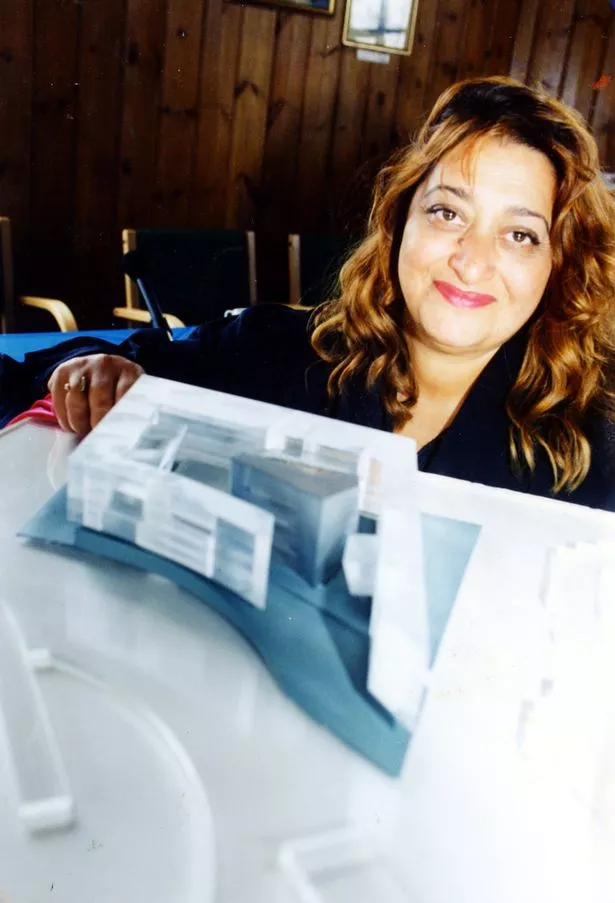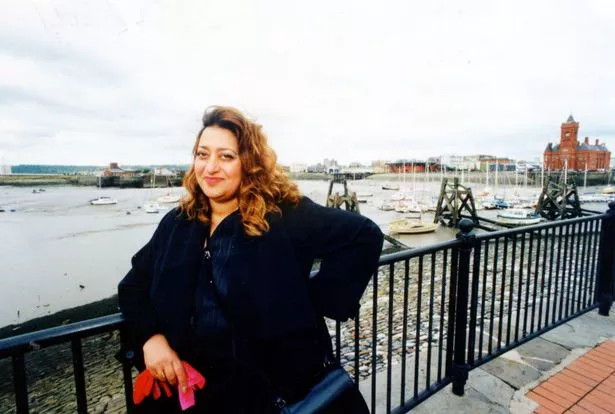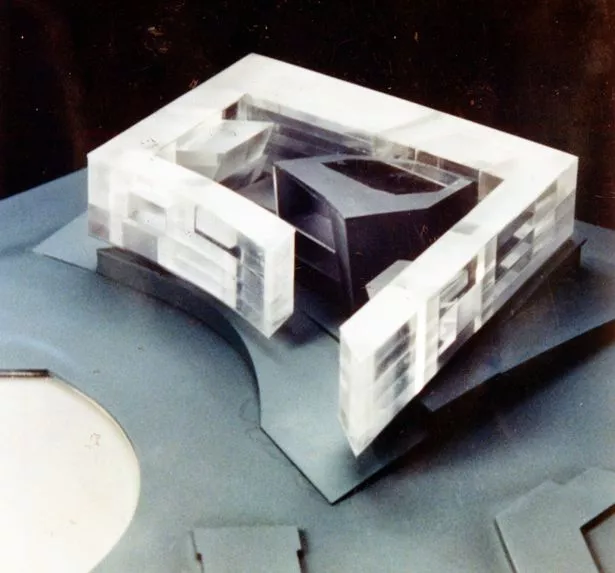It was considered the most imaginative decision possible but it didn’t materialise and ended up being built thousands of miles away instead Guangzhou Opera House, using the same design once planned for Cardiff(Image: Getty/yangyang1991)
Guangzhou Opera House, using the same design once planned for Cardiff(Image: Getty/yangyang1991)
The Wales Millennium Centre is one of Cardiff’s most recognisable buildings, an armadillo-style construction at once utterly identifiable yet also seen anew depending on how it’s lit or where you look from. This striking multi-million-pound edifice serves as Cardiff Bay’s crown jewel, marking the area’s evolution from its industrial dockland heritage.
However, prior to this landmark structure materialising, there existed competing proposals for the location, notably schemes for a Cardiff Bay Opera House. These blueprints, though, failed to come to fruition after the plans were beset by rancour and discord.
Internationally-celebrated Iraqi-born architect Dame Zaha Hadid spearheaded the bold venture throughout the mid-1990s. She had triumphed in a global competition to create the theatre yet despite her success the government eventually refused to finance the scheme owing to objections from certain local politicians. For the latest Cardiff news sign up to our newsletter here.
The concepts originally earmarked for Cardiff subsequently materialised in China where they formed the foundation for the renowned Guangzhou Opera House. Dame Zaha, whose creations earned widespread recognition, subsequently voiced her disappointment regarding the “resistance and prejudice” she believed had derailed the Cardiff venture.
When her designs were first revealed to Wales in 1994 they were hailed as “the most imaginative decision possible”. Specialists thought that her groundbreaking “necklace” design would have propelled Wales onto the global architectural stage had the £43m facility launched as intended on St David’s Day in 2000.
 Zaha Hadid’s controversial design for the Cardiff Bay Opera House in 1994(Image: WalesOnline )
Zaha Hadid’s controversial design for the Cardiff Bay Opera House in 1994(Image: WalesOnline )
Despite the excitement surrounding the project it couldn’t secure crucial support from the-then South Glamorgan County Council and Cardiff City Council. The Millennium Commission had contemplated financing the scheme but eventually deemed it too risky.
This wasn’t aided after the nearby Millennium Stadium, as was, successfully secured funding.
On December 22, 1995, the Millennium Commission’s choice to officially refuse the lottery funding application was revealed. The New York Times reported at the time: “In rejecting the request, Virginia Bottomley, the Secretary of State for Britain’s National Heritage, said the application was flawed by ‘uncertainties’ in the building’s financing and construction, which made it too risky.”
The refusal to back the Cardiff Bay Opera House project was met with criticism with some citing a “nervousness” about the architectural design, an attempt to “placate” rugby fans who supported the Millennium Stadium, and suggestions that authorities wanted to avoid appearing “elite”.
 Zaha Hadid and her controversial design for the Cardiff Bay Opera House in 1994(Image: WalesOnline )
Zaha Hadid and her controversial design for the Cardiff Bay Opera House in 1994(Image: WalesOnline )
Lord Crickhowell, former Conservative Secretary for Wales and leader of the opera house project, interrupted Mrs Bottomley’s press conference to condemn the rejection as “shocking and incomprehensible”.
“If this had been a project in London it would be getting backing,” he claimed. “You can understand the annoyance of people in Wales that we can’t get the kind of vitally important projects that London seems to be allowed.”
Rhodri Morgan, then Labour Party spokesman for Welsh affairs, criticised the Conservative Party’s Welsh secretary at the time, William Hague, saying: “If it came to a choice between the rugby stadium and the opera house then the stadium would come first. The Welsh secretary is a Meat Loaf fan and if you have a Meat Loaf fan as secretary it’s unsurprising.”
Dame Zaha described the commission’s decision as “a bummer” and asked: “Do they want nothing but mediocrity?” In 2013 she suggested that her ethnic minority background and gender might have influenced the resistance.
She said: “People are much more accustomed now to women. There might be certain prejudices in certain places but I honestly have not encountered them. I have encountered them, on the other hand, sometimes in the Anglo-Saxon world – here in the UK, maybe in America.”
 Zaha Hadid in Cardiff Bay(Image: Richard Swingler)
Zaha Hadid in Cardiff Bay(Image: Richard Swingler)
She added: “I’m not sure it’s worse, it’s only a personal experience. Nobody’s going to come and tell me: ‘We don’t want me to get this job because you’re a woman’. But I did come across a lot of resistance and prejudice when I wanted to build the Cardiff (Bay) Opera House, which is almost 20 years ago now. I don’t think that it was in any way hidden – there was commentary by certain people in various papers, on the radio – maybe not because I’m a woman but because I’m a foreigner.”
Dame Zaha, who died in Florida in 2016, was among the globe’s most groundbreaking architects, celebrated for her distinctive creations such as Rome’s MAXXI museum, the London Aquatics Centre, Evelyn Grace Academy in Brixton, Riverside Museum in Glasgow, and Maggie’s Centre in Kirkcaldy. Although the structure in Cardiff never materialised an opera house of identical design was subsequently constructed in China.
 The proposed building was deemed financially risky(Image: WalesOnline)
The proposed building was deemed financially risky(Image: WalesOnline)
The Guangzhou Opera House has since been recognised for transforming the city, which boasts more than four times the population of Wales, into a cultural hub. The granite, glass, and steel landmark garnered praise from architectural specialists and reignited recollections of the fierce political battles that resulted in the abandonment of the original Welsh project.
Jonathan Glancey, expressing his views in The Guardian, penned: “Ah, yes, the Cardiff Bay Opera House. In 1994, Hadid had designed a magical theatre for the Welsh coast. It would have become the most radical and compelling building in Britain, but an alliance of narrow-minded politicians, peevish commentators and assorted dullards holding the Lottery purse strings ensured it was never built.”
Similarly, Nicolai Ouroussoff noted in The New York Times that the Guangzhou creation represents the “most alluring opera house built anywhere in the world in decades,” stating: “The project is a vindication for Ms Hadid.”
After the opera house proposal was rejected the Wales Millennium Centre emerged as a replacement option. Despite requiring several years to obtain backing from the Welsh Assembly and the Millennium Commission the now-celebrated venue formally welcomed visitors in late November 2004.

